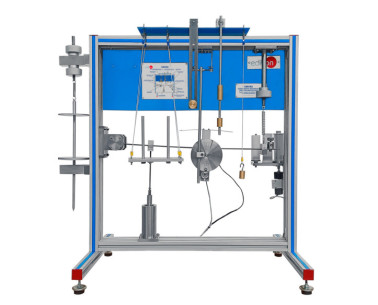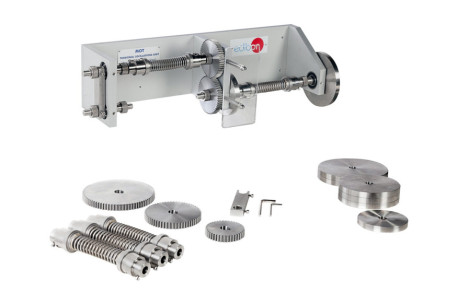The Vibration of Coil Spring Unit, "MVRE", has been designed by EDIBON to study and understand a coil torsion spring, a mass-spring system and the fundamental properties of its characteristic periodic motion.
In this sense, the unit consists of a rigid plate equipped with anchorage points where a rotating horizontal shaft is supported. A graduated disc to read the rotated angle, a lever joined to the shaft, where masses are located at different distance, and a coil torsion spring, attached to the shaft by one end and to the rigid plate by the other end, are arranged on the shaft.
Displacing the system a specific angle, the spring will exert a recovery force (torque) proportional to the stiffness of the spring due to the elastic deformation experienced. This parameter is one of the characteristic aspects of the spring and is known as spring constant "k".
On the other hand, locating the weights symmetrically in the arms of the lever a mass-spring system is generated. When that system is displaced a certain angle from its equilibrium position, it will describe a periodic motion characterized by its vibration frequency. Thus, it is possible to analyze the influence of the masses and their positions on the normal frequency of the resulting simple harmonic motion.
Besides, the unit can be directly fixed to the wall if desired.
 Cookie preferences
Cookie preferences
















